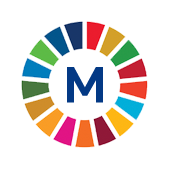 6.1.1 Proportion of population using safely managed drinking water servicesMetadataPeriod: AnnualYear: 2025 |
 6.1.1 Proportion of population using safely managed drinking water servicesMetadataPeriod: AnnualYear: 2025 |
| METADATA |
| Indicator information |
| Definition and methodology |
| Data source type and data collection method |
| Notes |
| ID of global indicator |
| Metadata update |
| Global metadata |
| Indicator information | Top |
| Indicator | |
6.1.1 Proportion of population using safely managed drinking water services | |
| Global indicator name | |
6.1.1 Proportion of population using safely managed drinking water services | |
| Target | |
6.1 By 2030, achieve universal and equitable access to safe and affordable drinking water for all | |
| Goal | |
Goal 6. Ensure availability and sustainable management of water and sanitation for all | |
| Definition and methodology | Top |
| Definition | |
Proportion of population using safely managed drinking water services is currently being measured by the proportion of population using an improved basic drinking water source which is located on premises, available when needed and free of faecal (and priority chemical) contamination.
Improve’ drinking water sources include: piped water into dwelling, yard or plot; public taps or standpipes; boreholes or tubewells; protected dug wells; protected springs; packaged water; delivered water and rainwater. | |
| Methodological explanations | |
The WHO/UNICEF Joint Monitoring Programme (JMP) compiles national data on drinking water from a wide range of different data sources. Household surveys and censuses provide information on types of drinking water sources, and also indicate if sources are accessible on premises. These data are combined with data on availability and compliance with drinking water quality standards (faecal and chemical) from administrative reporting or regulatory bodies. | |
| Method of calculation | |
The WHO/UNICEF Joint Monitoring Programme (JMP) uses a regression model and all available national data within the reference period, starting from the year 2000 to calculate the indicator.
To calculate the proportion of the population using safely managed drinking water services, three ratios must be calculated: the proportion of the population using improved water supplies which are accessible on premises, have water available when needed, and are free from contamination. Those ratios are then multiplied with the proportion of the population using improved water sources, respectively. National estimates are generated as weighted averages of the separate estimates for urban and rural areas, using population data from the most recent report of the United Nations Population Division. | |
| Unit of measure | |
% | |
| Available disaggregation | |
Type of settlements | |
| Territorial level | |
Republic of Serbia | |
| Data source type and data collection method | Top |
| Data source | |
The WHO/UNICEF Joint Monitoring Programme for Water Supply, Sanitation and Hygiene (JMP), Institutе for Public health Milan Jovanović Batut and Statistical Office of the Republic of Serbia | |
| Periodicity of data collection | |
Annual | |
| Notes | Top |
| ID of global indicator | Top |
C060101 | |
| Metadata update | Top |
| 5/6/2025 | |
| Global metadata | Top |
https://unstats.un.org/sdgs/metadata/files/Metadata-06-01-01.pdf | |